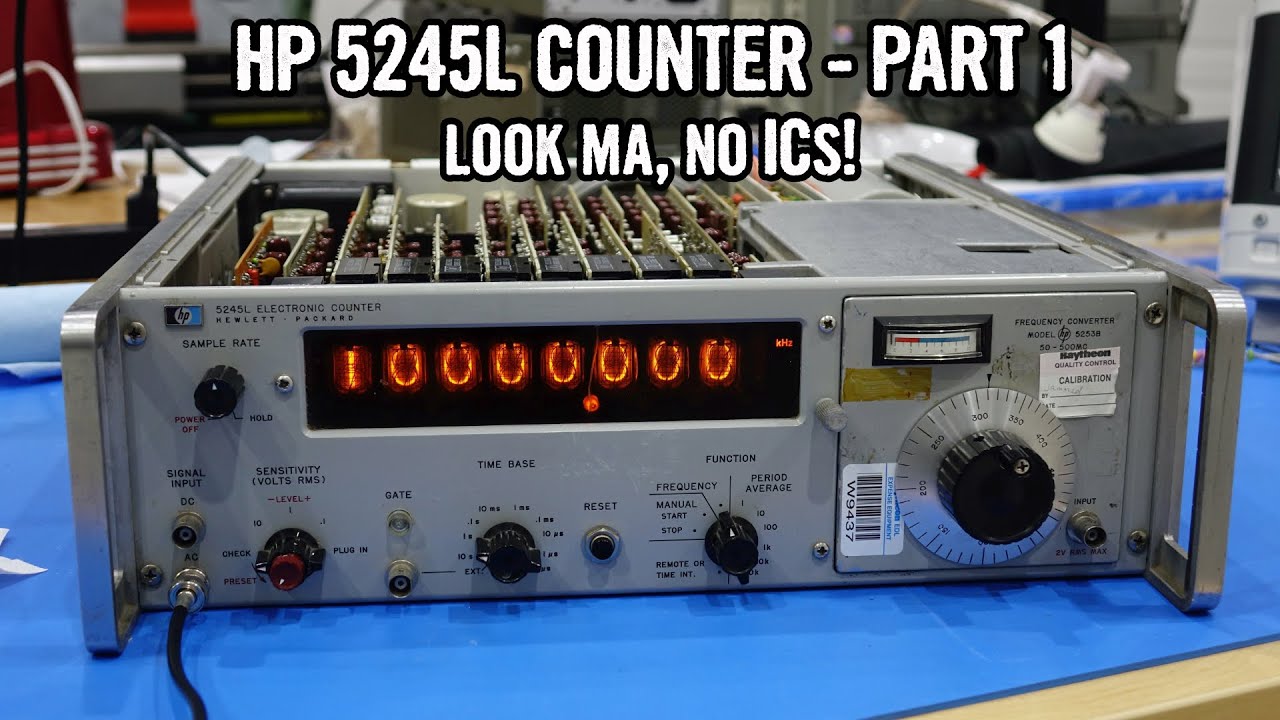Before the advent of digital electronics, accurately measuring frequency was very difficult. You might ask why this was. All you need to do is accurately measure an interval of time, then count how many oscillations of the signal occurred during that interval and there’s your answer, right? Yes, right, but counting is a digital operation, and unless you can’t count fast enough to keep up with the signal, you’re out of luck. So, people resorted to analogue techniques like precisely calibrated variable oscillators, beat frequency detectors, and other finicky arcana to do the job, crudely.
In 1963, Hewlett-Packard (H-P) introduced the model 5245L “electronic counter” which, with its built-in crystal oscillator time base (in a temperature-controlled oven for stability) could be used as a frequency meter for signals in the range from DC to 50 megahertz. With a plug-in frequency divider, it could measure frequencies up to 512 MHz, and over the 1960s a series of more capable plug-ins were released extending the frequency range up to 18 gigahertz in 1968. The 1964 H-P catalogue listed the base 5245L for US$ 2950, which is equivalent to around US$ 28,562 in 2023 BidenBucks. The 5253B plug-in, which extended the range to 512 MHz sold for US$ 500 (BB$ 4841).
This was digital electronics, with a nixie tube display, but, being 1963, there wasn’t a single integrated circuit to be seen inside. All the digital logic was built up from discrete components—transistors, diodes, resistors, and the odd neon bulb—packaged on a rack full of circuit boards plugged into a hand-wired backplane.
This particular unit, while lighting up the display and releasing no “magic smoke” when powered up, was completely non-functional. Worse, a look inside revealed earlier attempts at repair which had the distinct appearance of ham-fisted ignorant blundering. Well, here’s a challenge! Let’s dig in and see what’s going on, aided by the complete, component-level documentation H-P supplied customers with their instruments during the company’s golden age.
